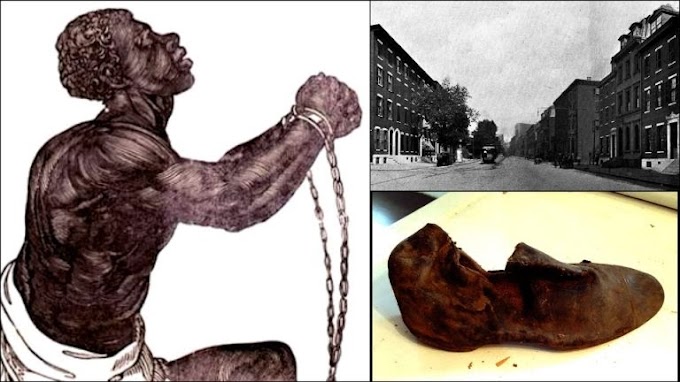The Oyo Empire Archaeology and Heritage Project recently completed its sixth field season. This year’s fieldwork has revealed more stunning finds. Our research was in two parts. The first focused on the state-controlled Old Bara town (near Oyo-Ile), ca. 1600-1836, where we conducted excavations in three residential areas to understand political economy, class, social dependency, and gender relations in the empire through the lens of household organization. We also continued our survey of the ancient town’s monumental and “public” structures to study approaches to urban planning in the metropolitan area of the empire. The discovery of more massive stone walls yielded new information on the strategies of place-making, territoriality, defense, labor mobilization, and power spectacles. We also collected more data on land-use practices, terracing, and water harvesting and transportation engineering.
.jpg)
The second part of our research was the continuation of excavations at BSM6. After six years of work here, I’ve seen what I’ve never been told, and I know I’ve not seen it all. This site has produced the longest continuous human occupation sequence in southwest Nigeria. It was not a surprise that we have a Later Stone Age (LSA) artifacts, in the form of microliths, in this area. These materials may go as far back as 3000 BC. It was our joy to discover an Early Iron Age (EIA) residential complex on top of the LSA occupation. This EIA community occupied the site by 400 BC (if not earlier) and lived there continuously for at least 400 years. This residential focus included several but poorly preserved burials under the house floors. There is evidence of crafting, elaborate food service, and home-making throughout the deposits. They also engaged in long-distance trade with the Upper Niger area. A terracotta figurine gives us a glimpse of their feminine-centered spiritual life. There are other occupation phases stacked on top of the EIA. After 1000 AD, the site was used for various activities, including ceremonial and residential. The peculiar stone arrangements that initially made BSM6 noticeable to us are likely related to astronomical observations, but we need more work on this subject. Another find was the extensive flatly-laid potsherd pavements dating to the thirteenth through fifteenth centuries.

This year’s extensive excavation units, some as large as 5x4 m, and others as deep as 3.6 m, present compelling evidence that we are dealing with at least four cultural horizons in Old Bara and its environs. These are tentatively labeled: Ako-Òkúta (LSA), Yangí (EIA), Atòkúta (LIA), and Ọ̀yọ́ cultural horizons. In the coming years, we hope to understand the relationships between these horizons. At Old Bara, we finally found what has eluded us for a long time in the archaeology of southwest Nigeria: long-term well-stratified archaeological deposits. Thanks to the ancestors and the Òrìṣà for guiding us.
Our 2022 team was the largest since we began this project in 2017. Thirty-one personnel, including lecturers, students, NCMM staff, and National Park Service staff, participated in the project. Our academic participants came from the University of Ibadan (Ibadan), Obafemi Awolowo University (Ife), University of Jos (Jos), Ahmadu Bello University (ABU), Kwara State University (KWASU), University of Abuja (Abuja), and the Institute of Archaeology, Jos (National Commission for Museums and Monuments). Student volunteers came from different academic backgrounds, including archaeology, cultural anthropology, heritage studies, political science, education, and languages. They also included graduates, postgraduates, and undergraduates. This diversity of backgrounds and interests was a huge asset to the project.
The 2022 Team:
Abulmalik Abdulmalik, ABU
Emmanuel Adeara, Ibadan
Segun Ajayi, Abuja
David Ajibade, National Park Service
Farouk Ajibade, Ibadan
Moses Akogun, Ibadan
Prof. Jonathan Aleru, Ibadan
Daniel Amusa, Ibadan
Tìmílẹ́hìn Ayelagbe, Ibadan
Abdul Badamasi, Jos
Ayobami Diya, Ibadan
Olugbenga Ezekiel, Ibadan
Olamide Falaye, Abuja
Temitope Funmilayo, Ibadan
Emmanuel Idowu, Ibadan
Great Iwudu, Jos
James Jacobs, Ibadan
Funom Kas, Institute of Archaeology, Jos
Abdulrazak Laaro, KWASU
Azeez Lawal, Ibadan
Nalong Manguna, Jos
Dr. Macham Mangut, Jos
Stanley Nwosu, Ibadan
Prof. Akin Ogundiran, Ibadan/Charlotte
Prof. Adisa Ogunfọlakan, Ife
Oluwatimilẹhin Ojo, Ibadan
Dr. Oluṣẹgun Ọpadeji, Ibadan
Dr. Emuobosa Orijemie, Ibadan
Ọrẹoluwa Ṣodẹkẹ, Ibadan
Isah Tamu, National Park Service
Dr. Bọlanle Tubọsun, Ibadan
Okhai Ubuike, Ibadan
The entire team must be commended for their hard work, professionalism, and great spirit, even in challenging situations. The terrain of Old Oyo and Old Bara is not for the faint-hearted. We had a rugged but lively team. There was no boring moment. The theme songs for the 2022 field season are Kizz Daniel’s Olololo and Fireboy DML’s Won Ni Won N Wa Mi, two recent hits in the Nigerian music scene. The young archaeologists played these songs so much that I began to hum them, even in my sleep. They also taught me the Buga move. And, we had DJ Hottie Hottie spicing things up with his assortment of hits. Many more to say, but too many words cannot fill the basket. Till another time
Report by Professor Akin Ogundiran
African Archaeological Review
Kindly Share Our Post, Thank you.
Kindly Share Our Post, Thank you.









0 Comments